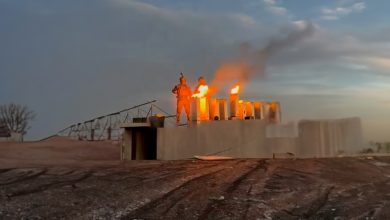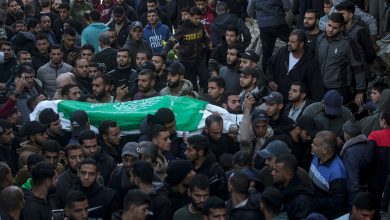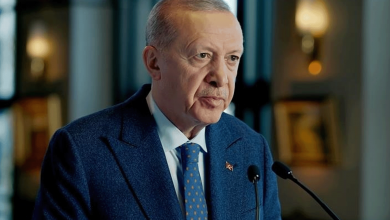Despite a week of relative calm following the implementation of a ceasefire agreement between Palestinian factions and Israel, the humanitarian crisis in the Gaza Strip continues to deepen. While the guns have fallen silent, the pervasive destruction and ongoing restrictions paint a grim picture of a population struggling to survive amidst widespread devastation and a desperate need for essential resources.
The ceasefire, brokered in Sharm el-Sheikh, Egypt, on October 9th with mediation from Qatar, Egypt, Turkey, and the United States after two years of Israeli military operations, offered a glimmer of hope for the 2.3 million residents of Gaza. However, the reality on the ground reveals a stark contrast between the promised relief and the persistent hardships. Reports indicate that many areas remain without electricity for extended periods, forcing residents to rely on unsafe water sources, raising serious concerns about the spread of disease. Palestinians can be seen huddling around fires for warmth, a stark reminder of the lack of basic necessities in the face of dropping temperatures.
Rebuilding efforts are hampered by the sheer scale of the destruction. Entire neighborhoods lie in ruins, with families sifting through the rubble of their former homes, searching for salvageable belongings or, tragically, the remains of loved ones. The images of Palestinians walking amidst the debris of Khan Younis and Gaza City serve as a potent reminder of the devastating impact of the conflict. Makeshift shelters, often nothing more than tents or damaged buildings, provide inadequate protection from the elements and lack essential amenities, exacerbating the suffering of displaced families, particularly women and children.
The healthcare system in Gaza, already strained before the recent conflict, is now on the verge of collapse. Hospitals and medical centers, many of which have sustained significant damage from airstrikes and ground operations, are struggling to cope with a severe shortage of medicines, medical equipment, and trained personnel. The destruction of facilities like the Al-Rantisi Children’s Hospital, once a vital center for pediatric care, highlights the devastating impact on the most vulnerable members of the population. The ability to provide adequate medical care to the sick and injured is severely compromised, further compounding the humanitarian crisis.
Access to clean water remains a critical challenge. With water infrastructure severely damaged, residents are forced to collect water from unreliable and often contaminated sources. The arduous task of carrying water across the rubble-strewn landscape underscores the daily struggles faced by Gazan families. Similarly, the scarcity of food and other essential supplies has left many reliant on aid organizations and charitable kitchens. Long queues for food distributions are a common sight, reflecting the widespread food insecurity and the desperation of families struggling to feed themselves.
Despite the ceasefire agreement, the flow of humanitarian aid into Gaza remains limited. Restrictions on the entry of goods, coupled with logistical challenges in reaching affected areas, hinder efforts to provide much-needed assistance. The Rafah crossing, a vital lifeline connecting Gaza to Egypt, remains largely closed, further restricting the movement of people and supplies. Reports suggest that aid trucks are waiting on the Egyptian side of the border, unable to deliver essential relief to those in need.
For more information about Palestine, check our dedicated section.
The discovery of mass graves at the Al-Shifa Hospital complex underscores the immense loss of life during the conflict. Families are now retrieving the bodies of their loved ones for proper burial, a somber process that highlights the deep wounds inflicted by the violence. The emotional toll on the Gazan population is immeasurable, as they grapple with the loss of family members, the destruction of their homes, and the uncertainty of the future.
Palestinian factions have expressed hope that the second phase of the ceasefire agreement, which includes the withdrawal of Israeli forces from certain areas and the full opening of border crossings, will be implemented soon. These measures are considered essential to alleviate the humanitarian crisis and facilitate reconstruction efforts. However, skepticism remains regarding Israel’s commitment to fully implementing the agreement.
The situation in Gaza remains precarious. While the ceasefire has brought a temporary respite from the violence, the underlying humanitarian crisis continues to fester. The Gazan people are in urgent need of sustained humanitarian assistance, reconstruction efforts, and a lasting political solution that addresses the root causes of the conflict. The international community must play a more active role in ensuring that the ceasefire agreement is fully implemented and that the Gazan people receive the support they need to rebuild their lives and their communities.
Furthermore, allegations of continued Israeli military activity, including reported airstrikes and shelling despite the ceasefire, raise serious concerns about the fragility of the peace. These actions, if confirmed, undermine the spirit of the agreement and further erode trust between the parties.
The future of Gaza remains uncertain. The path to recovery will be long and arduous, requiring a concerted effort from the international community to provide sustained humanitarian assistance, support reconstruction efforts, and address the underlying political issues that fuel the conflict. The people of Gaza deserve a future free from violence, poverty, and despair.



